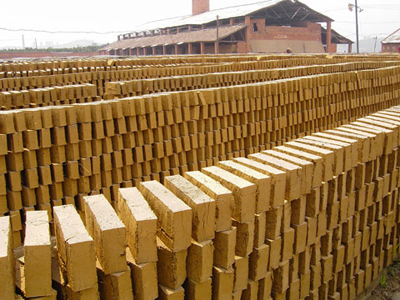The country's food security and social stability will be threatened if arable land shrinks any further, Land and Resources Minister Xu Shaoshi warned Tuesday.
"The illegal acquisition of arable land (for purposes other than agriculture) has endangered food safety and social stability both," Xu said.
Bricks are stacked to dry at a kiln in Yichang, Hubei Province in this undated photo. The practice of using farmland soil to make bricks means huge loss of farmland each year in China.
The country needs at least 120 million hectares of arable land to grow 700 million tons of grains required to feed its people, he said. But industrial wastes, expanding deserts and salinization have left 6 million hectares non-cultivable.
What's more, only 40 percent of the country's 133 million hectares of farmlands have proper irrigation facilities and weather conditions for growing crops, Xu said.
Illegal acquisition of arable land by grassroots governments poses another threat, he said. The country is caught between limited supply of and an unending hunger for land; hence it can meet only half of its annual demand for land needed for industrial construction and infrastructure development.
"Given the growing population and fast industrialization and urbanization, illegal land acquisition will probably continue," Xu said.
The government's minimum requirement for stable arable land is 120 million hectares, and the availability of only 121.8 million hectares makes it a "very demanding task to achieve the goal" because of variable factors such as droughts and floods, he said.
Quality arable land, which accounts for only a third of the total, is found mainly in the southeastern parts of the country. But again the demand for industrial and commercial land in that region is very high.
Per capita arable land in six provinces and municipalities, including Guangdong and Fujian, and Beijing, has already dropped to below 0.016 hectares, which according to the UN is the minimum needed for food safety.
Xu's warning came at a national conference. Citing figures from recent surveys, Xu said governments at the county, township and village levels are major violators of farmland use rules.
For instance, the ministry's crackdown on illegal farmland acquisition that began in September has thrown up 20,000 cases in which grassroots governments rented out 24,000 hectares of farmland illegally.
(China Daily December 26, 2007)






